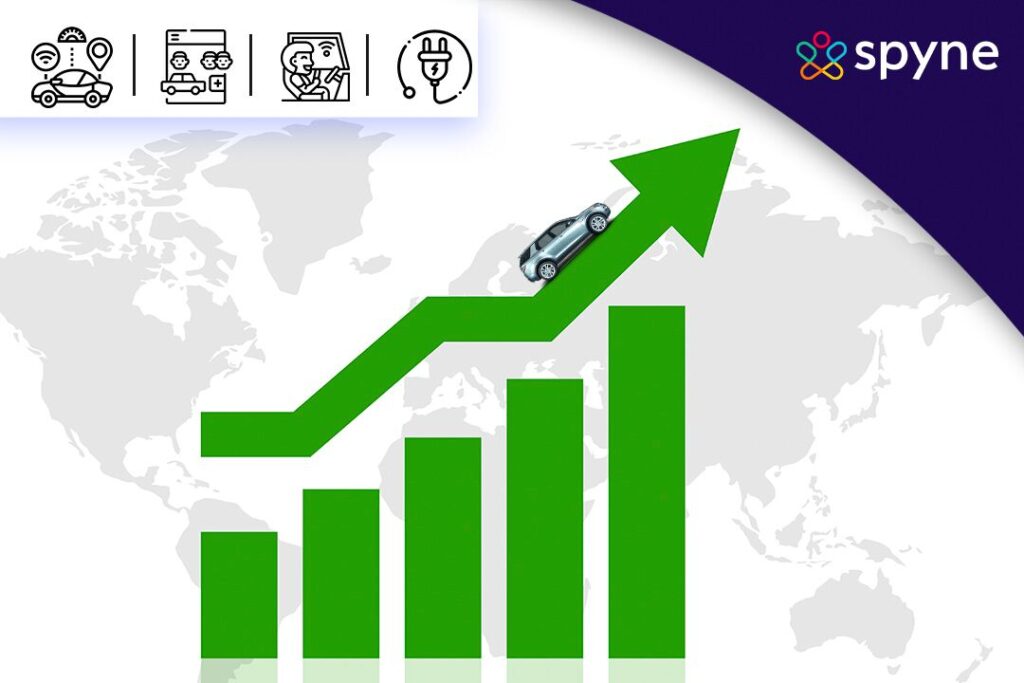China's Export-Oriented Economy: A Risky Strategy?

Table of Contents
The Historical Success of China's Export-Oriented Growth Model
China's economic miracle is largely attributed to its export-led growth strategy. Starting in the late 1970s with economic reforms and opening up, China leveraged its vast labor force, abundant natural resources, and strategic government policies to become the "world's factory." This success wasn't accidental; several key factors contributed:
- Low Labor Costs: China's competitive advantage stemmed from significantly lower labor costs compared to other developed nations, making its manufactured goods highly attractive in global markets.
- Access to Raw Materials: Domestic access to a wide range of raw materials further reduced production costs and facilitated large-scale manufacturing.
- Government Support: Government policies, including tax incentives and infrastructure investment, actively supported the growth of export-oriented industries.
Key milestones in this remarkable journey include:
- Rapid industrialization and infrastructure development: Massive investments in infrastructure, such as ports and transportation networks, facilitated the seamless flow of goods.
- Integration into global supply chains: China became a crucial link in global manufacturing supply chains, providing components and finished goods to businesses worldwide.
- Significant reduction in poverty: Export-led growth significantly contributed to poverty reduction, lifting millions of people out of poverty.
Emerging Risks and Vulnerabilities of Over-Reliance on Exports
While the export-oriented model has undeniably been successful, its inherent risks have become increasingly apparent. Over-reliance on external demand leaves China vulnerable to global economic fluctuations and geopolitical instability.
- Vulnerability to protectionist measures and trade disputes: The ongoing trade tensions between China and the US demonstrate the significant impact of protectionist policies on export volumes. Tariffs and trade restrictions can severely disrupt export-oriented businesses.
- Fluctuations in global demand impacting domestic production: A downturn in global demand can lead to decreased production, job losses, and economic instability within China.
- Dependence on foreign markets creating economic instability: China's economy is heavily tied to the performance of its major export markets. Any economic slowdown in these markets directly impacts China's growth.
The Impact of Geopolitical Instability on Chinese Exports
Geopolitical events, such as the ongoing US-China trade war and increasing tensions in various global regions, directly influence China's export performance. Sanctions, trade restrictions, and disruptions to global supply chains due to political instability can significantly impact Chinese export revenues and economic stability. For example, the recent tensions in Eastern Europe caused disruptions in global supply chains, impacting Chinese businesses reliant on raw materials or intermediate goods from the affected regions.
Shifting Global Dynamics and the Need for Economic Diversification
The global economic landscape is evolving. The rise of other exporting nations, particularly in Southeast Asia, intensifies competition. Moreover, the increasing focus on sustainable and ethical manufacturing practices challenges China's traditional cost-advantage model. This necessitates a fundamental shift towards a more balanced economy, less reliant on exports. China is increasingly recognizing the need for economic diversification, focusing on:
- Investment in domestic infrastructure and consumption-driven industries: Stimulating domestic consumption through infrastructure development and creating a robust domestic market can lessen dependence on foreign demand.
- Focus on technological innovation and high-value-added products: Moving up the value chain by focusing on high-tech industries and innovation can reduce reliance on low-cost manufacturing.
- Strengthening social safety nets to boost domestic consumption: Strengthening social security and welfare systems can bolster consumer confidence and encourage domestic spending.
The Role of Technology and Innovation in Mitigating Export Risks
Technological advancement offers a pathway for China to mitigate the risks associated with its export-oriented economy. Investing in research and development, fostering innovation, and promoting technological self-reliance are crucial steps. This includes:
- Developing advanced technologies: Investing in automation, artificial intelligence, and other advanced technologies can improve productivity and reduce reliance on low-cost labor.
- Creating high-value-added goods and services: Focusing on innovation can allow China to produce goods and services with higher profit margins, reducing vulnerability to price competition.
- Promoting technological self-reliance: Reducing dependence on foreign technology and building domestic technological capabilities is crucial for long-term economic security.
Conclusion: Re-evaluating China's Export-Oriented Strategy for a Sustainable Future
China's export-oriented economy has undeniably fueled remarkable economic growth, lifting millions out of poverty. However, its over-reliance on exports presents significant vulnerabilities to global economic downturns, trade disputes, and geopolitical instability. The need for economic diversification is not merely a strategic choice; it's a necessity for sustainable growth. By focusing on domestic consumption, technological innovation, and a more balanced economic structure, China can mitigate the risks and ensure its long-term economic prosperity. Understanding the complexities of China's export-oriented economy is crucial for navigating the future of global trade. Continue your research to gain a deeper understanding of this evolving economic landscape.

Featured Posts
-
 Google Breakup A Deep Dive Into The Potential Consequences
Apr 22, 2025
Google Breakup A Deep Dive Into The Potential Consequences
Apr 22, 2025 -
 Closer Security Links Forged Between China And Indonesia
Apr 22, 2025
Closer Security Links Forged Between China And Indonesia
Apr 22, 2025 -
 Blue Origin Cancels Launch Vehicle Subsystem Malfunction
Apr 22, 2025
Blue Origin Cancels Launch Vehicle Subsystem Malfunction
Apr 22, 2025 -
 Bmw And Porsches China Challenges A Growing Trend In The Auto Industry
Apr 22, 2025
Bmw And Porsches China Challenges A Growing Trend In The Auto Industry
Apr 22, 2025 -
 Pope Francis Dies Global Condolences Pour In
Apr 22, 2025
Pope Francis Dies Global Condolences Pour In
Apr 22, 2025
